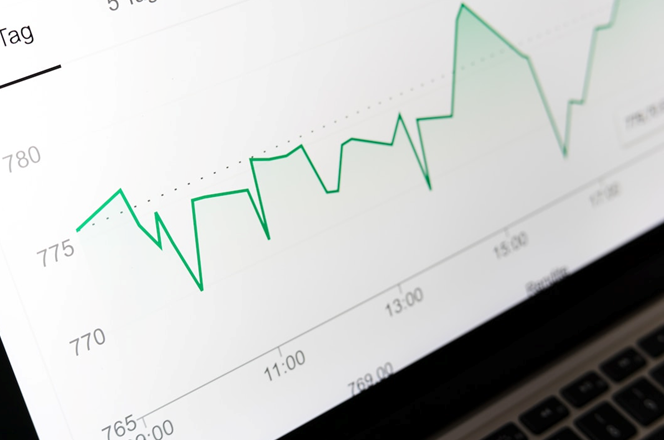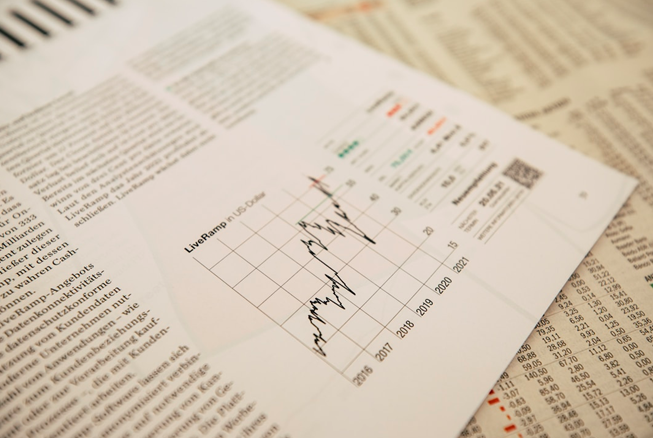In the business world, making informed decisions often comes down to understanding complex data. One of the most invaluable tools business professionals have at their disposal for this task is the line chart. But what exactly is a line chart, and how does it apply to business analytics? How can businesses harness the power of line charts to guide their decision-making process and boost their bottom-line performance? These are some of the questions this article aims to answer. Keep reading to delve into the nitty-gritty of line charts in business analytics.
Understanding a Line Chart

So, what is a line chart? Simply put, a line chart, also referred to as a line plot or line graph, displays information as a sequence of data points connected by straight-line segments. It’s a basic type of chart commonly used in several fields, including finance, economics, and business, to illustrate trends over time.
Line charts come with an intuitive design that allows readers to comprehend complex patterns or trends within a dataset quickly. For instance, using a line graph, businesses can clearly follow the evolution of their sales or profits over several years, months, or even days. This helps them identify periods of growth or decline, providing valuable insights for strategic planning.
A line chart can show multiple datasets simultaneously. This feature makes it particularly useful in revealing relationships or comparisons among different items or variables. A company could, for instance, use a line chart to compare the sales performance of different products over a specific period. By doing this, the business can easily determine which products performed well and which ones lagged, providing a necessary foundation for informed decision-making.
How Businesses Use Line Charts
Line charts have numerous uses in business. They serve as an essential tool for depicting trends, patterns, and fluctuations in data over time. Companies often use them to track changes in sales, revenues, expenses, stock prices, market trends, customer behavior, and more. Apart from helping identify trends, line charts can also highlight outliers or anomalies in data, which could indicate potential issues or opportunities.
For instance, a retail business might use a line chart to track its sales performance. By collecting and charting sales data over time, the retailer can accurately depict periods of high and low sales, enabling it to pinpoint crucial factors that might affect sales, such as seasons, holidays, or promotional activities. This information can inform future sales strategies, business operations, and budget planning.
In the financial realm, investment firms and banks use line charts to monitor stock market trends and make investment decisions. A line chart can clearly show stock prices over time, reflecting their ups and downs and enabling analysts to forecast future trends. This accurate representation of historical data is critical in predicting future performance and guiding investment strategies.
Enhancing Data Visualization with Line Charts
To reap the full benefits of line charts, it’s crucial to use them effectively for data visualization. Effective data visualization empowers businesses to communicate complex data effortlessly, encouraging better decision-making throughout the organization. A line chart can play a significant role in this process by visualizing large amounts of data in an easy-to-understand manner.
When done right, data visualization using line charts can simplify even the most complex datasets, transforming them into visually appealing and understandable graphics. This, in turn, promotes data-driven decision-making within an organization. Using a line chart, a company can easily communicate the sales performance of different sectors, making it easy for everyone in the organization to understand and respond appropriately.
Combining a line chart with other visual elements, such as a table or a bar chart, can further enhance data visualization. For instance, a line chart may show general trends, while a table displays specific values. This ensures that the audience not only sees the big picture but also pays attention to important details.
Altogether, line charts stand out as invaluable tools in business analytics. They offer easy-to-understand visualization of complex data, assist in making data-driven decisions, and help in devising future strategies. By unlocking the power of line charts, businesses can stay a step ahead in today’s data-driven world.








